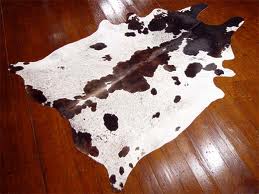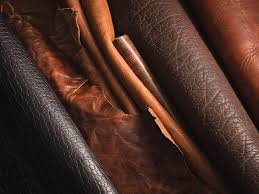Besides export and import, fund attraction and allocation to industrial and production projects, pouresh investment development group had a successful experience in importing full production line and machinery of crust, Salambore and leather transforming industry for Omid Vian co. in Hamedan province.
This article explains our valuable experience about this lucrative industry.
Introducing crust and leather industry
Animal skin has had many uses since time immemorial. Over the years, humans have been able to transform the skin into leather. Leather was used in the manufacture of clothing or armor, and most of it was for clothing. Clothing is one of the basic needs of humanity.
The use of leather has diversified over time and nowadays even leather is used in many decorative items, such as car interior, phone case, watch strap, shoes, jacket, handbag, wallet, book cover, and etc.
Leather actually is the skin of animals which transform during tannery process from a perishable material to unperishable one. It is possible to transform skin of every animal to leather but the thickness and durability of them is different.
The skin of some mammals and reptiles have great consumption in leather industry for instance cow, sheep and goat skin are widely used besides, The skin of animals such as camels, horses, kangaroos, ostriches, pigs, snakes, lizards, crocodiles and even shark skin can be used as raw material in this industry.

Leather types
Leather is divided to three typed: light, heavy and semi heavy leather.
Light leather is made from animal skins such as sheep, goats and lambs. Regarding to delicacy of this type, it is most favourable type to product cloths and gloves and if it has poor quality used as a primer.
The skin of ostriches and crocodiles are used to produce semi-heavy leather, which is used for mostly decorative and very expensive items.
The skin of animals such as cattle, buffaloes, calves and camels are used to produce heavy leather. This leather is very durable and beautiful and eye-catching. This type of leather, due to its high endurance, is used in the soles of shoes, bags, car belts and so on.
There is another type of leather classification which concentrates on tanning type. Such as: Vegetable, Moroccan, Spanish, Russian, one side grainy, whole grain, suede, ashbalt, etc.
The tanning ISIC code in the ministry of mining, industry and commerce of Iran is 1911 and it includes several subcategories based on the procedures performed on skin and skin type.

Methods of making leather
Skin to leather transformation has several steps
Wash and soak: Cold water uses to clean blood and salt from skin surface and longer washing and soaking time provide higher quality of leather. However, hot water can be used but it has negative effect on leather quality.
Liming process: This process in necessary for interfibrillary proteins., Keratin proteins and grease and fats removal
Disassembly process: At this stage, the extra material is removed from the skin
Hair removal process: At this point, the skin is put on special materials for one night and the hair is cut off on special devices or by hand.
Enzymes: This process concentrates on reducing PH of the leather by removing lime from it.
Cutting Leather: At this point, the leather is cut with different thicknesses.
Staining process: At this point the leather is painted with specific colours.
Leather supplied in different kinds to the market such as: Salambor, Wat Blau, Crust, Dikrast and etc. Leather production cost is varied in base of its production method. For instance the traditional production process is cheap conversely leather production by modern mechanized methods needs greater investment allocation.

A Survey of the Leather Industry of Iran
According to statistics released by the Iranian Leather Industries Association, Iran accounts for 5 to 6 percent of the global leather export market. Of this amount, about 4 to 5% is for sheep skin and 1% for cow skin. The total production of cow skin is around 22 million per year and for sheep and goat they are equal to 18 and 7 million respectively per year.
The salambore which produced by sheep skin is around 18 million annually and exporting this amount provide 4 million USD for the country. This amount will increase to 210 million USD if this amount of skin transform to leather and transform 18 million sheep skin to clothing, bags and other leather products can boost the earning into 800 million USD.
Moreover, the leather industry can make number of jobs, for example: every skin production needs 7 person, skin to leather transformation needs 3 persons and leather accessories production needs 200 human force.
The greatest skin production of Iran belongs to Tehran, Mashhad and Tabriz provinces. 10 percent of Iran total leather products are supplied domestically and the rest is exported worldwide. It is necessary to mention that 50% of leather expert is salambore.

The critical points of leather and skin industry of Iran
The analysis and researches were completed by ministry released that bellow factors are classified as critical points of the leather industry.
Worn out machinery
Lack of specialized training
High production costs
Difficult to finance
Lack of national brand
Lack of specialized distribution companies
Lack of master and design specialists
Quality problem and variety of locally produced leather
Lack of price stability in the market
Lack of liquidity and working capital of synthetic leather manufacturers
Problems with importing heavy skin
Problems with chemical tariffs and infrastructure.
How to invest in leather and leather?
Investors need a permit to enter the industry to build a factory in the estate industrial parks. Also, after obtaining an establishment permit, if they wish to use banking facilities to build or develop their own industrial unit, they need a justification plan to provide the operating bank.
All of the above mentioned services are provided by Pouresh group.
